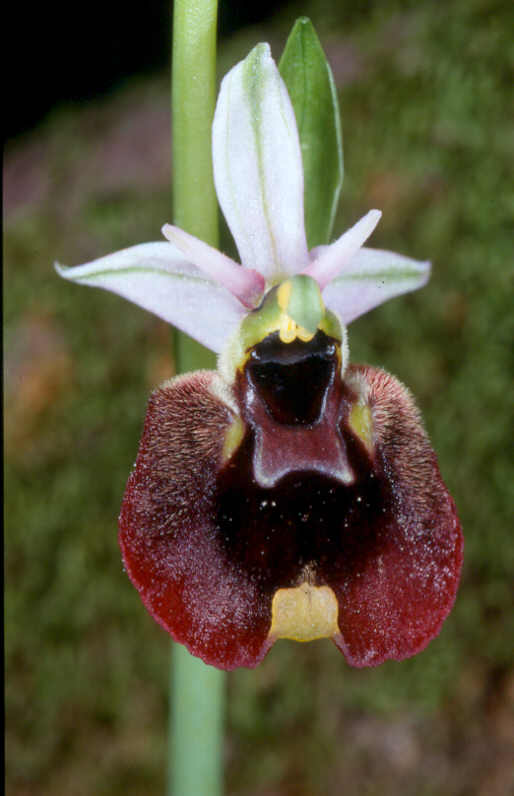 |
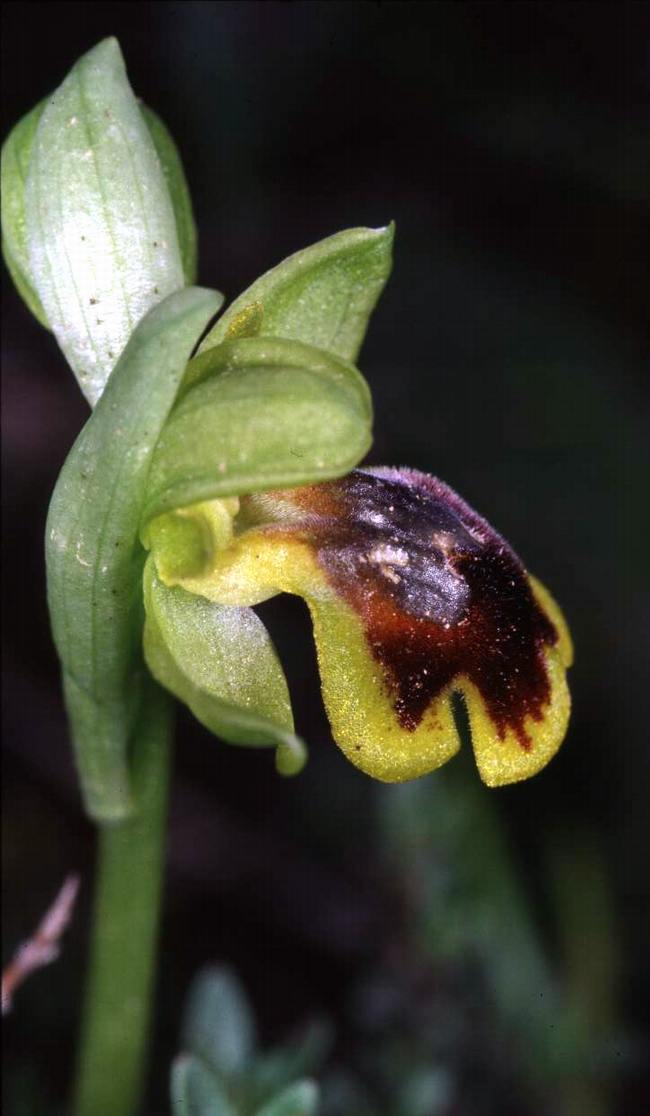 |
 |
 |
 |
 |
 |
 |
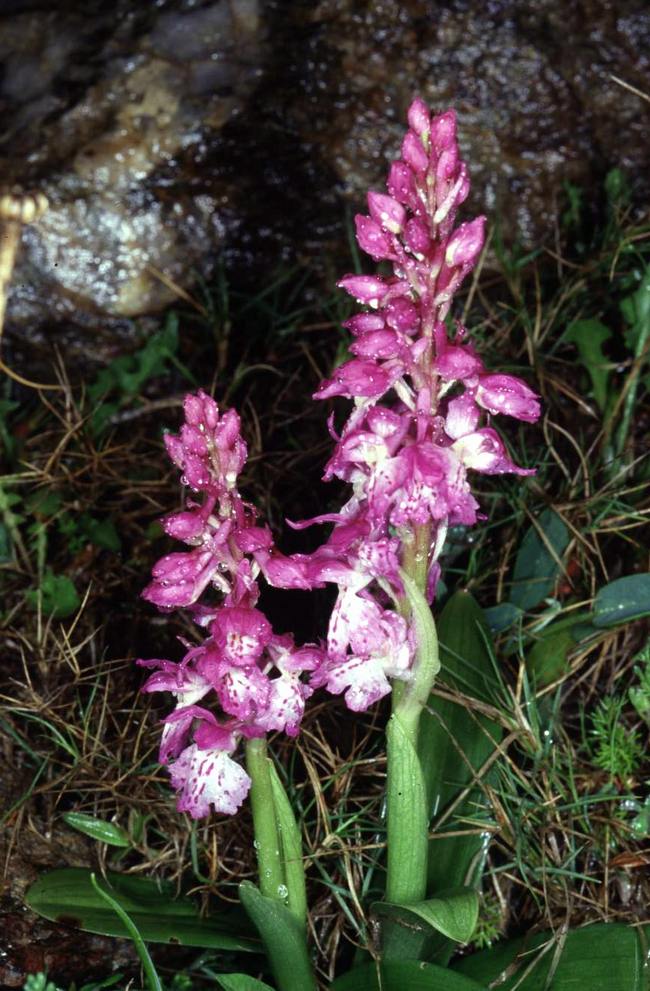 | 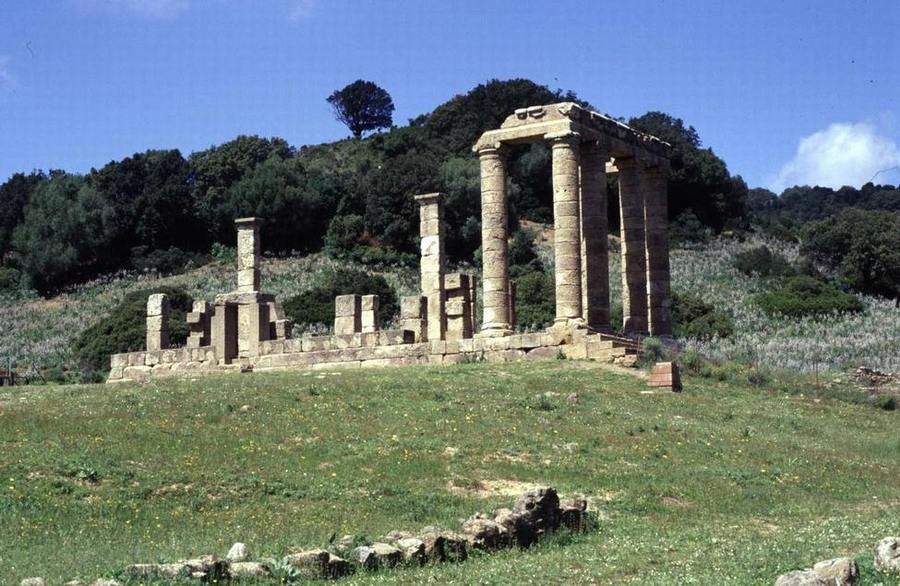 | 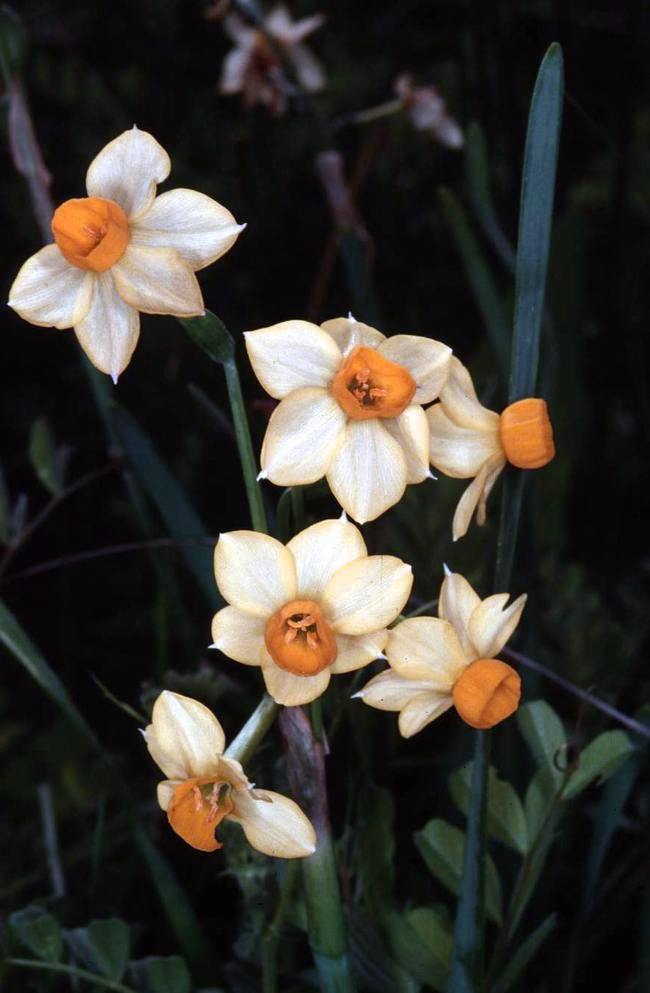 |
This is the plant still often called O. iricolor from Corsica and Sardinia. It's a large flowers plant, the length of its lip being 16-26 mm, known to occur also in Tunisia and Algeria, North Africa, where it grows alongside another species of this group, O. vallesiana, flowers of which are smaller with lips 12-16 mm long. Il s'agit de la plante que l'on appelle encore souvent O. iricolor en Corse et en Sardaigne. C'est une plante à grandes fleurs, au labelles longs de 16 à 26 mm, dont on sait maintenant qu'elle existe aussi en Afrique du Nord, en Algérie et en Tunisie, où elle côtoie une autre espèce du groupe, O. vallesiana aux fleurs bien plus petites, la longueur de son labelle étant de 12 à 16 mm. Bibliography: De Bélair,G., Vela,E. & Boussouak,R. 2005.- Inventaire des orchidées de Numidie (N-E Algérie) sur vingt années. J. Eur. Orch. 37: 291-401. Delforge,P., Devillers-Terschuren,J. & Devillers,P. 1991.- Contributions taxonomiques et nomenclaturales aux Orchidées d'Europe. Natural. belges 72: 99-101. Devillers,P. & Devillers-Terschuren,J.1994.- Essai d'analyse systématique du genre Ophrys. Natural. belges 75 (Orchid. 7 suppl.): 273-400. Devillers,P. & Devillers-Terschuren,J.2000.- Le type d'Ophrys eleonorae. Natur. belges 81 (Orchid. 13): 323-330. | ||
| O. eleonorae 1 | Italy, Sardina | 16-04-2000 |
| O. eleonorae 2 | Italy, Sardina | 16-04-2000 |
This is the plant with medium sized flowers from Corsica and Sardinia. It has a strong zonation on the lip, at the end of the macula. Il s'agit de la plante à fleurs de taille moyenne fleurissant en Corse et en Sardaigne. Le labelle montre une forte zonation plus pâle après la macule. Bibliography : Devillers,P. & Devillers-Terschuren,J. 1994.- Essai d'analyse systématique du genre Ophrys. Natural. belges 75 (Orchid. 7, suppl.): 308. | ||
| O. zonata 1 | Italy, Sardinia | 14-04-2000 |
| O. zonata 2 | Italy, Sardinia | 14-04-2000 |
The authors recently put to the fore the existence of a second small species of Pseudophrys in Sardinia. This species, O. ortuabis, has still smaller flowers, and flowers more early than the other one, O. funerea. You will find more informations about it in the heading NEWS 2 n°14. Les auteurs ont récemment mis en évidence l'existence en Sardaigne d'un deuxième Pseudophrys à petites fleurs. Cette espèce, O. ortuabis, a des fleurs encore plus petites, et fleurit plus tôt que l'autre plante, O. funerea. Vous trouverez davantage d'informations concernant O. ortuabis dans la rubrique NEWS 2 n°14. Bibliography : Grasso,M.P. & Manca,L. 1998.- Observations sur un nouvel Ophrys du groupe funerea découvert en Sardaigne. L'Orchidophile 131: 77-81. Grasso,M.P. & Manca,L. 2002.- Ophrys ortuabis M.P.Grasso et L.Manca, sp. nova.L'Orchidophile 151: 81-86. | ||
| O. ortuabis 1 Slide Walter Van den Bussche Nieuwkerken, Belgium | Italy, Sardinia Sarcidano, Sa Mesenzia,700 m Locus typicus | 08-04-2004 |
| O. ortuabis 2 Slide Walter Van den Bussche Nieuwkerken, Belgium | Italy, Sardinia Sarcidano, Sa Mesenzia,700 m Locus typicus | 08-04-2004 |
| O. ortuabis 3 Slide Walter Van den Bussche Nieuwkerken, Belgium | Italy, Sardinia Sarcidano, Sa Mesenzia,700 m Locus typicus | 08-04-2004 |
| O. ortuabis 4 Slide Helmut Presser Eichstätt, Germany | Italy, Sardinia Sarcidano Sa Mesenzia Locus typicus | 21-03-2008 |
| O. ortuabis 5 Slide Helmut Presser Eichstätt, Germany Habitus | Italy, Sardinia Sarcidano Sa Mesenzia Locus typicus | 21-03-2008 |
| O. ortuabis 6 Slide Helmut Presser Eichstätt, Germany | Italy, Sardinia Sarcidano Sa Mesenzia Locus typicus | 21-03-2008 |
| O. ortuabis 7 Slide Helmut Presser Eichstätt, Germany | Italy, Sardinia Sarcidano Sa Mesenzia Locus typicus | 21-03-2008 |
| O. ortuabis 8 Slide Helmut Presser Eichstätt, Germany | Italy, Sardinia Sarcidano Sa Mesenzia Locus typicus | 21-03-2008 |
| O. ortuabis 9 Slide Helmut Presser Eichstätt, Germany Habitus | Italy, Sardinia Perdastefogu | 29-03-2008 |
| O. ortuabis 10 Slide Helmut Presser Eichstätt, Germany Side view | Italy, Sardinia Perdastefogu | 29-03-2008 |
| O. ortuabis 11 Slide Helmut Presser Eichstätt, Germany | Italy, Sardinia Perdastefogu | 29-03-2008 |
| O. ortuabis 12 Slide Helmut Presser Eichstätt, Germany | Italy, Sardinia Perdastefogu | 29-03-2008 |
| O. ortuabis 13 Slide Helmut Presser Eichstätt, Germany | Italy, Sardinia Perdastefogu | 29-03-2008 |
| O. ortuabis 14 Slide Helmut Presser Eichstätt, Germany | Italy, Sardinia Perdastefogu | 29-03-2008 |
This species with middle-sized flowers was described from South Corsica. The mottled appearance of the labellum, although quite inconstant, is very attractive when present. The distribution area is larger than usually accepted. It probably grows in Sardinia as shown by slides 7 - 9 and kindly given by Bart Van de Vijver (Edegem, Belgium) and is also said to have been spotted in continental southern France. But many uncertainties remain about its actual distribution. Cette espèce à fleurs de taille moyenne est décrite du Sud de la Corse. L'aspect marbré du labelle est très attrayant lorsqu'il est bien développé, ce qui n'est pas toujours le cas. L'aire de répartition dépasse la Corse comme le montrent les diapositives 5 - 7 faites en Sardaigne et aimablement données par Bart Van de Vijver (Edegem, Belgique). L'espèce semble aussi avoir été trouvée dans le sud de la France continentale. Mais de nombreuses incertitudes persistent quant à son aire de répartition. Bibliography : Foelsche G. & W. 1998.- Ophrys marmorata, une nouvelle espèce de la flore corse. L'Orchidophile 133: 177-178. | ||
| O. marmorata 7 Slide Bart Van de Vijver Edegem, Belgium |
Italy, Sardinia Nuoro, Tiscali | 13-04-2004 |
| O. marmorata 8 Slide Bart Van de Vijver Edegem, Belgium |
Italy, Sardinia Nuoro, Tiscali | 13-04-2004 |
| O. marmorata 9 Slide Bart Van de Vijver Edegem, Belgium |
Italy, Sardinia Nuoro, Tiscali | 13-04-2004 |
This well known plant escaped any description till now. The species grows in central Sardinia where there are many nice stands around the city of Laconi where it flowers in April. The flowers are quite large for the group with the lip 12-15 mm long, longitudinally and tranversally convex, giving the flower a charming appearance, hence its name, the Latin adjective lepidus, -a, -um meaning "charming, ageable, pleasant, elegant". The lip is strongly trilobed, the angle between its axis and the outer edges of the side lobes turning around 45°. The bearing of the flowers is completely different from that of O. sicula. Instead of being hold flat and almost horizontal, the labellum is strongly geniculated at its base, with its upper part hold almost vertically. The brown color also frequently invades the yellow borders. Ces plantes bien connues n'ont été décrites que tout récemment. Elles poussent dans le centre de la Sardaigne, de nombreuses et belles stations existant près de la ville de Laconi où elles fleurissent en avril. Les fleurs sont assez grandes pour le groupe, la longueur du labelle est en effet de l'ordre de 12-15 mm. Il est très convexe tant longitudinalement que transversalement, ce qui leur donne un aspect charmant, d'où le nom, l'adjectif latin lepidus, -a, -um signifie en effet "plaisant, agréable, charmant, élégant". Le labelle est nettement trilobé, le bord extérieur des lobes latéraux formant avec l'axe du labelle un angle d'environ 45°. Le port des fleurs est très différent de celui d'O. sicula. Alors que chez ce dernier le labelle est plan et quasi horizontal, il est ici fortement genouillé à la sortie de la cavité stigmatique, sa partie supérieure se tenant presque à la verticale. De plus le brun de centre envahit fréquemment les bords jaunes. Bibliography : Moingeon,S. & Moingeon,J.-M. 2005.- Ophrys lepida, sp. nova, espèce de Sardaigne appartenant au groupe d'O. subfusca. L'Orchidophile 166: 173-178. | ||
| O. lepida 1 | Italy, Sardinia Laconi Locus typicus | 15-04-2000 |
| O. lepida 2 | Italy, Sardinia Laconi Locus typicus | 15-04-2000 |
| O. lepida 3 | Italy, Sardinia Laconi Locus typicus | 15-04-2000 |
| O. lepida 4 | Italy, Sardinia Laconi Locus typicus | 15-04-2000 |
| O. lepida 5 | Italy, Sardinia Laconi Locus typicus | 15-04-2000 |
| O. lepida 6 | Italy, Sardinia Laconi Locus typicus | 15-04-2000 |
O. speculum susp. orientalis H. F. Paulus = O. eos P. Devillers & J. Devillers-Terschuren 2009 Prof. Hannes Paulus has now shown that eastern plants of this species are pollinated by the bee Dasiscolia ciliata subsp. araratensis instead of the typical subspecies Dasiscolia ciliata which pollinates western plants. The eastern plants are hence considered forming a distinct subspecies, O. speculum subsp. orientalis. For more informations about this, see OPHRYS NEWS n°5. Please note that this subspecies has recently (2009) been upgraded to specific level with the name Ophrys eos P. Devillers & J. Devillers-Terschuren 2009. Le Professeur Hannes Paulus (Vienne, Autriche) a montré que les plantes orientales de cette espèce (à l'est de l'Italie) sont pollinisées par l'abeille Dasiscolia ciliata subsp. araratensis au lieu de Dasiscolia ciliata qui pollinise les plantes typiques, occidentales. (Le locus typicus d'O. speculum est au Portugal!) Les plantes de l'est du bassin méditerranéen sont par conséquent considées comme appartenant à une sous-espèce particulière, O. speculum subsp. orientalis. Vous trouverez davantage d'informations concernant ce problème dans OPHRYS NEWS n°5. Veuillez noter que cette sous-espèce vient d'être élevée au rang spécifique (2009) sous le nom d'Ophrys eos P. Devillers & J. Devillers-Terschuren 2009. Bibliography : Delforge,P.1999.-Contribution à la stabilisation de la nomenclature dans le groupe d'Ophrys fusca : désignation d'un néotype pour Ophrys fusca Link in Schrader 1800, Ophrys funerea Viviani 1824, Ophrys bilunulata Risso 1844 et Ophrys forestieri (Reichenbach fil. 1851)Lojacono 1909.Natural. belges (Orchid.12) : 179-229. Devillers,P. & Devillers-Terschuren,J. 1994.- Essai d'analyse systématique du genre Ophrys. Natural. belges 75 (Orchid. 7, suppl.): 342-343. Devillers, P. & Devillers-Terschuren, J. 2009.- Rhodian Ophrys: Diagnostic characters, relationships and biogeography. Natural. belges 90 (Orchid.22): 233-290. Paulus, H.F. 2001.- Daten zur Bestäubungsbiologie und Systematik der Gattung Ophrys in Rhodos (Griechenland) mit Beschreibung von Ophrys parvula, Ophrys persephonae, Ophrys lindia, Ophrys eptapigiensis spec. nov. aus der Ophrys fusca s. str. Gruppe und Ophrys cornutula spec. nov. aus der Ophrys oestrifera-Gruppe (Orchidaceae und Insecta, Apoidea). Ber. Arbeitskrs. Heim. Orch. 18(1): 38-86. | ||
| O. speculum 2 subsp. speculum | Italy, Sardinia | 13-04-2000 |
This very well known small Ophrys is absolutely constant all over its large distribution area which extends form the Canary islands (where it is the only Ophrys species) to western Anatolia and North Africa. Ce petit Ophrys bien connu est absolument constant dans toute son énorme aire de répartition qui s'étend des îles Canaries (où c'est la seule espèce d'Ophrys) à l'Anatolie occidentale et à l'Afrique du Nord. | ||
| O. bombyliflora 8 | Italy, Sardinia Alghero - Ittiri | 13-04-2000 |
Ophrys of the O. tenthredinifera group from peninsular Italy have much smaller flowers than those of typical O. tenthredinifera and always have a conspicuous tuft of hairs above the appendix. They attract two different bees, Eucera clypeata and E. oraniensis. The plant grows from Tuscany to Campania and Apulia and is often quite common. The situation of the group appears to be extremely intricated in Sardinia, where probably many different species are present. Slides 3-4-5-6 show Sardinian plants, which belong perhaps to another species, but that, at least temporarily, I include in O. neglecta Les Ophrys du groupe d'O. tenthredinifera qui poussent en Italie péninsulaire ont des fleurs bien plus petites que celles d'O. tenthredinifera sensu stricto, et présentent toujours une importante touffe de poils au-dessus de l'appendice. Ils attirent deux pollinisateurs différents, Eucera clypeata et E. oraniensis. Ils poussent en Toscane, dans le Latium, en Campanie et dans les Pouilles. La situation semble beaucoup plus compliquée en Sardaigne où plusieurs espèces, ayant des fleurs de tailles différentes et fleurissant à des époques différentes, sont sans doute présentes. Les dias 3-4-5-6 montrent des plantes sardes qui appartiennent peut-être à une autre espèce, mais que je juge plus prudent de maintenir, au moins provisoirement, dans O. neglecta. Les dias 7-8 montrent une plante du monte Pollino, en Calabre. Bibliography : Devillers,P., Devillers-Terschuren,J. & Tyteca,D. 2003.- Notes on some of the taxa comprising the group of O. tenthredinifera Willdenow. J. Eur. Orch. 35: 109-162. | ||
| O. neglecta 3 | Italy, Sardinia Villanova-Alghero | 13-04-2000 |
| O. neglecta 4 | Italy, Sardinia Villanova-Alghero | 13-04-2000 |
| O. neglecta 5 | Italy, Sardinia Bono-Nuoro | 14-04-2000 |
| O. neglecta 6 | Italy, Sardinia Iglesiente |
19-04-2000 |
This most wonderful Ophrys is an hybridogene species between O. chestermanii and O. tenthredinifera, which evolved in the mountains close to the city of Iglesias in the south-western corner of Sardinia. Quite often the plants grow in the shadow of trees, where their pollinator, the bumblebee Psithyrus vestalis, which also pollinates O. chestermanii, flies. Ce superbe Ophrys est une espèce hybridogène qui s'est développée entre O. chestermanii et O. tenthredinifera dans les montagnes de l'arrière-pays d'Iglésias, dans le sud-ouest de la Sardaigne. Il a le même pollinisateur qu'O. chestermanii, le bourdon parasite Psithyrus vestalis, qui vole plutôt à l'ombre des arbres, où poussent les Ophrys. Bibliographie : Paulus,H.F. & Gack,C. 1995.- Zur Pseudokopulation und Bestäbung in der Gattung Ophrys (Orchidaceae) Sardiniens und Korsikas. Jahresber. Naturwiss. Ver. Wuppertal 48 : 188-227. | ||
| O. normanii 1 | Italy, Sardina | 19-04-2000 |
| O. normanii 2 | Italy, Sardina | 19-04-2000 |
| O. normanii 3 | Italy, Sardina | 19-04-2000 |
| O. normanii 4 | Italy, Sardina | 19-04-2000 |
| O. normanii 5 | Italy, Sardina | 19-04-2000 |
| O. normanii 6 With strongly recurved lip | Italy, Sardina | 19-04-2000 |
| O. normanii 7 With pink sepals and petals | Italy, Sardina | 19-04-2000 |
| O. normanii 8 | Italy, Sardina | 19-04-2000 |
| O. normanii 9 | Italy, Sardina | 19-04-2000 |
| O. normanii 10 | Italy, Sardina | 19-04-2000 |
| O. normanii 11 | Italy, Sardina | 19-04-2000 |
| O. normanii 12 | Italy, Sardina | 19-04-2000 |
| O. normanii 13 | Italy, Sardina | 19-04-2000 |
| O. normanii 14 Slide Bart Van de Vijver Edegem, Belgium Habitus |
Italy, Sardinia Domusnovas | 20-04-2004 |
| O. normanii 15 Slide Bart Van de Vijver Edegem, Belgium Habitus |
Italy, Sardinia Domusnovas | 20-04-2004 |
| O. normanii 16 Slide Bart Van de Vijver Edegem, Belgium |
Italy, Sardinia Domusnovas | 20-04-2004 |
| O. normanii 17 Slide Bart Van de Vijver Edegem, Belgium |
Italy, Sardinia Domusnovas | 20-04-2004 |
| O. normanii 18 Slide Bart Van de Vijver Edegem, Belgium |
Italy, Sardinia Domusnovas | 20-04-2004 |
| O. normanii 19 Slide Bart Van de Vijver Edegem, Belgium |
Italy, Sardinia Domusnovas | 20-04-2004 |
This magnificent Ophrys was for long believed to grow only in the Iglesiente, but two growing sites have been spotted in the center of Sardinia, island where it is endemic to. It avoids typical Ophrys growing places in full sun but prefers to grow in the shadow of trees where flies its pollinator, the bumblebee Psithyrus vestalis, also the pollinator of O. normanii which favours the same kind of habitats, but the insect doesn't show any interest for the O. tenthredinifera s.l. (probably O. neglecta) also present on the same biotopes but with a more sunny aspect. On a longtemps pensé que ce magnifique Ophrys était limité à l'Iglesiente, mais deux stations ont été découvertes dans le centre de la Sardaigne, île où l'espèce est endémique. Elle évite les endroits très ensoleillés, où poussent en général les Ophrys, mais préfère l'ombre des arbres où vole son pollinisateur, le bourdon Psithyrus vestalis qui pollinise aussi O. normanii, fréquent dans les mêmes endroits, mais ne manifeste aucun intérêt pour l'O. tenthredinifera s.l. local (sans doute O. neglecta) qui pousse sur les mêmes sites mais plus au soleil. Bibliographie : Paulus,H.F. & Gack,C. 1995.- Zur Pseudokopulation und Bestäbung in der Gattung Ophrys (Orchidaceae) Sardiniens und Korsikas. Jahresber. Naturwiss. Ver. Wuppertal 48 : 188-227. | ||
| O. chestermanii 1 | Italy, Sardinia Domusnovas | 19-04-2000 |
| O. chestermanii 2 | Italy, Sardinia Domusnovas | 20-04-2000 |
| O. chestermanii 3 Slide Bart Van de Vijver Edegem, Belgium Habitus |
Italy, Sardinia Domusnovas | 20-04-2004 |
| O. chestermanii 4 Slide Bart Van de Vijver Edegem, Belgium |
Italy, Sardinia Domusnovas | 20-04-2004 |
| O. chestermanii 5 Slide Bart Van de Vijver Edegem, Belgium |
Italy, Sardinia Domusnovas | 20-04-2004 |
This is the small flowered Ophrys of the Ophrys bornmuelleri group endemic to Corsica and Sardinia. The plant is rather slender with 3 to 8 (12) rather small flowers with a length of the lip between 7 and 12 mm. Flowering is quite late, from mid-April into May. In Corsica the species is very rare, limited to the calcareous region around Bonifacio. It is much more common in Sardinia. Il s'agit de l'Ophrys à petites fleurs du groupe d'O. bornmuelleri, endémique de Corse et de Sardaigne. C'est une plante assez grêle portant de 3 à 8, voire 12, fleurs assez petites, dont le labelle a une longueur comprise entre 7 et 12 mm. Elle fleurit assez tard, de la mi-avril au début de mai. En Corse l'espèce est très rare, limitée à la table calcaire de Bonifacio. Elle est bien plus commune en Sardaigne. Bibliography : Bournérias, M., Prat, D. & al. 2005.- Les Orchidées de France, Belgique et Luxembourg, deuxième édition. Ouvrage collectif de la Société Française d'Orchidophilie, Parthénope Collection, 504 p. Devillers-Terschuren,J. & Devillers,P. 1992.- Ophrys annae, une espèce sarde du groupe d'Ophrys episcopalis. Natural. belges 73 (Orchid. 5): 109-112. | ||
| O. annae 1 | Italy, Sardinia, Sassari Ittiri locus typicus |
13-04-2000 |
| O. annae 2 | Italy, Sardinia, Sassari Ittiri locus typicus |
13-04-2000 |
| O. annae 3 Slide Hans Dekker Hoogeveen, The Netherlands Habitus |
Italy, Sardinia, Sassari Florinas | 04-1998 |
| O. annae 4 Slide Hans Dekker Hoogeveen, The Netherlands Three flowers |
Italy, Sardinia, Sassari Florinas | 04-1998 |
| O. annae 5 Slide Hans Dekker Hoogeveen, The Netherlands Two flowers |
Italy, Sardinia, Sassari Florinas | 04-1998 |
| O. annae 6 Slide Hans Dekker Hoogeveen, The Netherlands Two flowers |
Italy, Sardinia, Sassari Florinas | 04-1998 |
| O. annae 7 Slide Hans Dekker Hoogeveen, The Netherlands |
Italy, Sardinia, Sassari Florinas | 04-1998 |
| O. annae 8 Slide Hans Dekker Hoogeveen, The Netherlands Close-up |
Italy, Sardinia, Sassari Florinas | 04-1998 |
| O. annae 9 Slide Hans Dekker Hoogeveen, The Netherlands Close-up |
Italy, Sardinia, Sassari Florinas | 04-1998 |
This species is endemic to Corsica (the island it was described from) and Sardinia. It flowers very late, at the end of May and in the beginning of June, being the last Ophrys to flower on the two islands and altogether missed by orchidophiles visiting these islands in April. A special trip has to be made to see it, but it's also the flowering period of Platanthera algeriensis. As can be expected from a species flowering when the grass is tall, Ophrys conradiae is quite a robust but slender plant, reaching 60 cm, with 3 - 10 rather small flowers (lip length 9 - 13 mm), almost always very scolopaxoid and with green sepals and petals. Cette espèce est endémique de Corse (d'où elle est décrite) et de Sardaigne. Elle fleurit fort tard, de la fin-mai au début juin, en même temps que Platanthera algeriensis, et les orchidophiles qui visitent les deux îles en avril ne la voient jamais. Comme on peut s'y attendre de la part d'une espèce qui fleurit quand l'herbe est haute, O. conradiae est une plante robuste mais élancée, pouvant atteindre 60 cm, portant de 3 à 10 fleurs relativement petites (longueur du labelle 9 - 13 mm), presque toujours scolopaxoïdes, aux sépales et pétales verts. Bibliography : Melki, F. & Deschatres, R. 1993.- L'éclosion d'une fleur nouvelle en Corse : Ophrys conradiae. L'Orchidophile 107: 101-107. | ||
| O. conradiae 1 Slide Jan Essink Elp, The Netherlands Habitus |
Italy, Sardinia Domusnovas | 27-05-2004 |
| O. conradiae 2 Slide Jan Essink Elp, The Netherlands |
Italy, Sardinia Domusnovas | 27-05-2004 |
| O. conradiae 4 Slide Helmut Presser Neumarkt in der Oberpfaltz, Germany |
Italy, Sardinia Domusnovas Grotte di San Giovanni | 01-06-2000 |
| O. conradiae 5 Slide Helmut Presser Neumarkt in der Oberpfaltz, Germany Two flowers, side view |
Italy, Sardinia Lanusei | 30-05-2000 |
| O. conradiae 6 Slide Helmut Presser Neumarkt in der Oberpfaltz, Germany |
Italy, Sardinia Lanusei | 30-05-2000 |
| O. conradiae 7 Slide Helmut Presser Neumarkt in der Oberpfaltz, Germany |
Italy, Sardinia Lanusei | 30-05-2000 |
| O. conradiae 8 Slide Helmut Presser Neumarkt in der Oberpfaltz, Germany Habitus |
Italy, Sardinia Lanusei | 30-05-2000 |
| O. conradiae 9 Slide Helmut Presser Neumarkt in der Oberpfaltz, Germany Pinkish white sepals |
Italy, Sardinia Lanusei | 30-05-2000 |
| O. conradiae 10 Slide Helmut Presser Neumarkt in der Oberpfaltz, Germany Pinkish white sepals |
Italy, Sardinia Lanusei | 30-05-2000 |
| O. conradiae 11 Slide Helmut Presser Neumarkt in der Oberpfaltz, Germany Close up |
Italy, Sardinia Lanusei | 30-05-2000 |
This species, endemic to Corsica and Sardinia, flowers later than O. praecox. Slides 1-2-3-4 are made in Sardinia. Cette espèce, endémique de Corse et de Sardaigne, fleurit plus tard qu'O. praecox. Les diapositives 1-2-3-4 sont faites en Sardaigne. Bibliography : Devillers-Terschuren,J. & Devillers, P. 1988.- Les Ophrys "arachnitiformes" du bassin méditerranéen occidental. Natural. belges 69 (Orchid. 2): 98-112. | ||
| O. morisii 1 | Italy, Sardinia | 16-04-2000 |
| O. morisii 2 | Italy, Sardinia | 16-04-2000 |
| O. morisii 3 | Italy, Sardinia | 16-04-2000 |
| O. morisii 4 | Italy, Sardinia | 16-04-2000 |
Pierre Delforge is of the opinion that O. praecox is so close to O. panormitana, sharing with it the same pollinator and being very difficult to tell apart by any stable morphological characteristics, that O. praecox doesn't represent anything more than a variety of O. panormitana. Slides 1-2-3-4 are made in Sardinia. Pierre Delforge est d'avis qu'O. praecox, qui a le même pollinisateur qu'O. panormitana et ne s'en distingue par aucun caractère stable bien tranché, n'est qu'une variété d'O. panormitana. Les diapositives 1-2-3-4 sont faites en Sardaigne. Bibliography : Devillers-Terschuren,J. & Devillers, P. 1988.- Les Ophrys "arachnitiformes" du bassin méditerranéen occidental. Natural. belges 69 (Orchid. 2): 98-112. | ||
| O. praecox 1 | Italy, Sardinia | 13-04-2000 |
| O. praecox 2 | Italy, Sardinia | 13-04-2000 |
| O. praecox 3 | Italy, Sardinia | 12-04-2000 |
| O. praecox 4 | Italy, Sardinia | 12-04-2000 |
This species is still very often called O. atrata which is a junior synonym. Cette espèce est encore souvent appelée O. atrata. Mais ce nom, donné illégitimement par Lindley, est un synonyme postérieur. | ||
| O. incubacea 3 | Italy, Sardinia | 13-04-2000 |
| O. incubacea 4 | Italy, Sardinia | 13-04-2000 |
This species is endemic to Sardinia, where it appears to be restricted now to the mountains aroud Dorgali. It was formaly spotted in a few stations close to Sassari, but was no more recently observed over there. Highly variable, it was sometimes erroneously labelled O. lunulata. Cette espèce, endémique de Sardaigne, semble limitée à l'heure actuelle aux montagnes de Dorgali. Précédemment observée près de Sassari, elle n'y a plus été signalée depuis longtemps. D'une grande variabilité, elle est responsable des mentions anciennes d'O. lunulata en Sardaigne. | ||
| O. panattensis 1 | Italy, Sardinia | 16-04-2000 |
| O. panattensis 2 | Italy, Sardinia | 16-04-2000 |
| O. panattensis 3 | Italy, Sardinia | 16-04-2000 |
| O. panattensis 4 | Italy, Sardinia | 16-04-2000 |
| O. panattensis 5 | Italy, Sardinia | 16-04-2000 |
| O. panattensis 6 | Italy, Sardinia | 16-04-2000 |
| O. panattensis 7 | Italy, Sardinia | 16-04-2000 |
| O. panattensis 8 | Italy, Sardinia | 16-04-2000 |
| O. panattensis 9 | Italy, Sardinia | 16-04-2000 |
| O. panattensis 10 | Italy, Sardinia | 16-04-2000 |